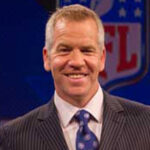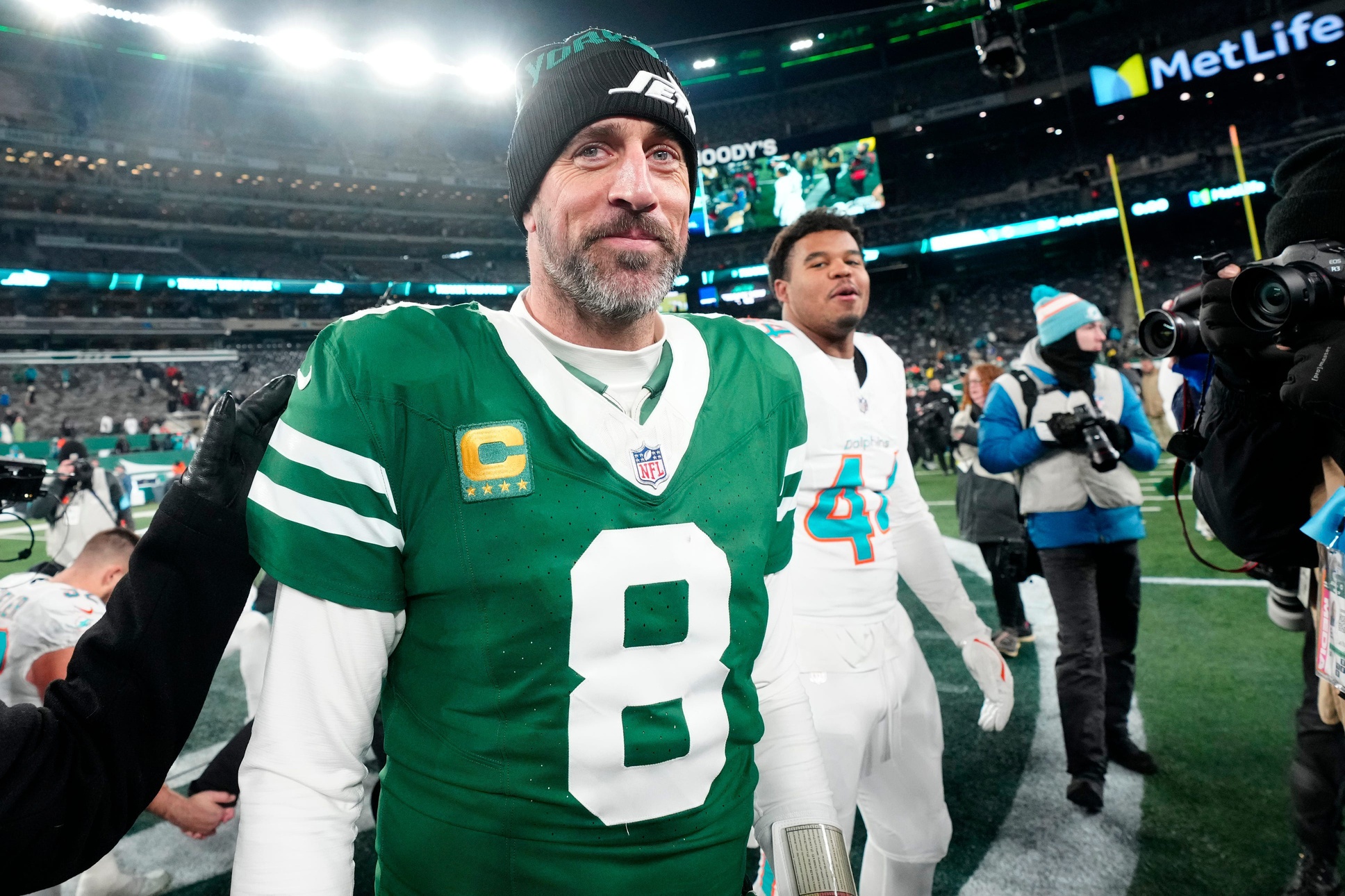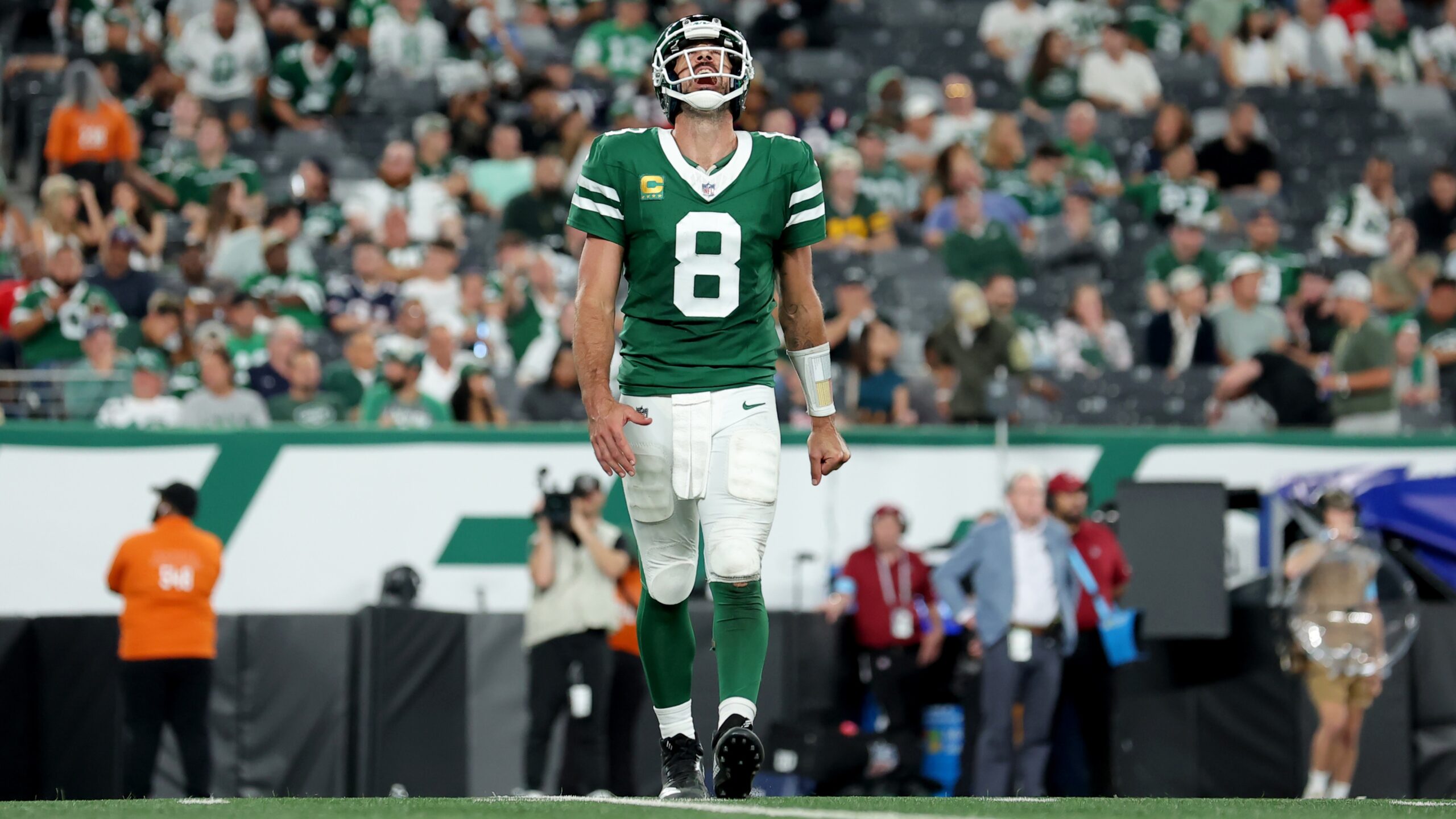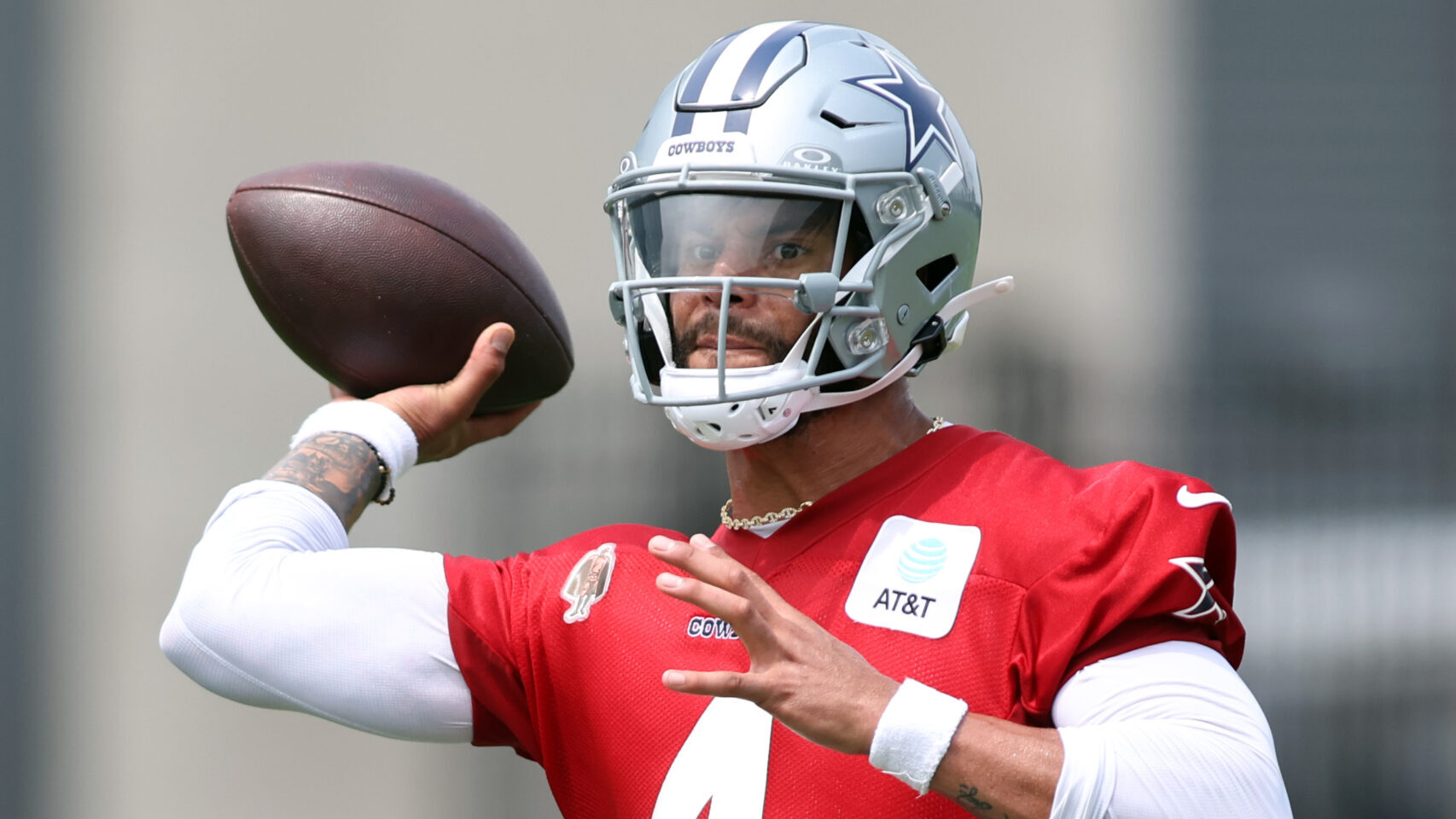Analysis
2/8/23
11 min read
Pre-Snap Read: How Eagles' Hurts Developed Into MVP Candidate

What a difference a year makes. This timeless phrase only applies to one of the two Super Bowl LVII teams and one of the game's quarterbacks.
While Patrick Mahomes and the Kansas City Chiefs are right where they’re supposed to be, Jalen Hurts and the Philadelphia Eagles are better than expected. They went from a fledgling NFC playoff team to a dominant NFC Champion in one season. Their trip from decent to excellent was such an accelerated one there was hardly time to wonder where they were going or to doubt if they would get there.
The confidence Hurts and the Eagles command right now is even more impressive when you look at the questions surrounding them a year ago when they lost in the first round of the playoffs.
They won their final three games to make the playoffs, an accomplishment that in and of itself made the season a success. Yet, in their wild-card game against the Tampa Bay Buccaneers, the Eagles trailed 31-0 heading into the fourth quarter, and the score was a fair indication of the difference between them and the Buccaneers, with that gap most noticeable on offense. While the Bucs leaned into a balanced attack, the Eagles' lead punch, their run game, wasn’t landing, and their passing game as a counter, was punchless.
So, they returned to Philadelphia knowing Hurts’ first full season as a starter was a win since he led the team to the playoffs one year after a four-victory campaign. But the golf clap applause for that feat was joined by a steady drumbeat of questions about the next step, and if the team and its offense were poised to take it.
The run game Philadelphia turned to at the midway point of the season had already proven to be one of the league’s best; it was the QB and the passing attack making people wonder.
Well, this season started with a win against the Detroit Lions when Hurts accounted for 333 yards and the team scored 38 points. The questions were lined up and knocked down. The Eagles didn’t lose until November — which turned out to be their only loss with Hurts starting — and scored more points and gained more yards than any team in the NFC, on their way to tying their Super Bowl LVII opponent, the Chiefs, for the most wins in the NFL.
The trade for A.J. Brown was huge, the offensive line is terrific, the run game is still the main attraction and coach Nick Sirianni deserves a ton of credit for his game-planing and play-calling. But Hurts wasn’t just along for the ride: he made the offense better, both on the ground and in the air, and made it a nightmare to defend.
Plain and simple, he became a more effective quarterback this season, as many do from their first full season as a starter to their second. But what part of his development stood out the most?
I sat down to watch Hurts and the Eagles' offense, from the playoff dud in Tampa Bay last season to a handful of games this year with his improvement in mind. A number of areas jumped out.
>> READ: Inside Possible Hurts, Eagles Contract Negotiations
Reaction to Pressure
Watching a series of third-down failures from early in last year’s playoff loss at Tampa Bay and comparing it to how Hurts handles the moments of pocket chaos now was a story of progress. That contrast felt like the right place to start.
On a third-and-9 early in the first quarter, the Buccaneers rushed only three. With the clear numbers advantage, Philadelphia’s offensive line provided a nice pocket for Hurts. But he quickly felt pressure that wasn’t actually there from the right side and vacated to the left. Before he could truly get outside the pocket and give himself a chance to make a play, he rushed a pass that was batted down. He never should have left the pocket, then once he did, he failed to give his improvising skills a chance to save the play.
That rarely happened this year. First of all, he’s more likely to sense his pocket is clean, and hang in to give his progression a chance. Second, if he did feel the need to scramble, he’s more patient with these versions of “Plan B” and more willing to use every last yard and split second he can navigate to keep the play alive.
Back to the first quarter of last January’s playoff defeat in Tampa Bay. On a third-and-8, the Bucs brought an extra rusher off the slot to his left. The Eagles weren’t outnumbered; it was five rushers vs. five protectors. But Hurts reacted like they were. He had a moment of panic, looked down at the rush, then covered the ball and allowed himself to be swallowed up by the rush. He was no threat to pass or run, and the Eagles basically surrendered a third-down opportunity.
Think about how many times you saw a blitz this year render Hurts a non-threat either with his arm or his legs. Not often.
Flash forward to their game this year against the Indianapolis Colts in November when the Eagles efforted a late comeback. Down 13-3 early in the fourth quarter on a first-and-10, Hurts dropped back, only to have the pocket collapse just as he set up. His instincts told him to scramble to his left, but just as he leaned into that move, a rusher blocked his path.
In one amazing athletic act, he stopped, pirouetted to the right, found an alley in that direction, and cut back to the middle for a gain of 23 yards. The play led to a touchdown shortly after, which led to the game-winning TD on the next drive.
It’s not that Hurts didn’t make those kinds of plays in 2021, it’s that he made more positive ones this year. Perhaps just as importantly, he didn’t allow pressure in the pocket — perceived or real — to create as many negative ones for him and the Eagles.
Recognition, Timing, Touch
Hurts’ passing production this season raced past the numbers he posted a year ago, showing significant gains in every way you could measure QB success. This table shows Hurts' marked improvement in a number of categories.
| Season | Completion % | Passing Yards | Passing Touchdowns | Interceptions | QB Rating |
| 2021 | 61.3 | 3,144 | 16 | 6 | 87.2 |
| 2022 | 66.5 | 3,701 | 22 | 9 | 101.6 |
He didn’t improve so much by all of a sudden finding next-level arm strength or velocity. More times than not, he recognized where the ball should go and placed it where it needed to be. He’s more likely to “throw it on time” than he is to “fit it in there.”
I spent a good amount of time with the Eagles' win against the Colts because they trailed for most of the game, and I wanted to emphasize how he played in a situation he didn’t find himself in too often. Down by 10 in the third quarter on his own 26, Hurts dropped back and immediately recognized the Colts were playing man coverage. The corner to his left, Isaiah Rodgers, had his head turned to the quarterback and was running stride-for-stride down the sideline with DeVonta Smith. From the middle of the field, Hurts threw a 25-yard fade-stop to Smith, between the far numbers and boundary, and he threw it perfectly.
This sort of deep, out-cutting route to the sideline is often associated with big-armed quarterbacks, the ones who can still locate their fastball 35 yards down the field. But Hurts got it done differently. He let the ball go well before the receiver came out of his break, and by the time he turned around, it was on his chest.
As the ball settled into Smith’s hands, Ian Eagle’s call on the broadcast of "On Time!" nailed it. Hurts floated it more than he drove it, and that was fine, because he threw it early, and placed it perfectly.
Some golfers birdie a par 4 by driving it 320 yards down the fairway and hitting in to the green with their wedge. Others hit it 275 yards off the tee and knock their 7 iron stiff. All that matters is the 3.
The point here is, by NFL standards, Hurts has an ok arm. But when the ball is released on time and goes where the call and coverage dictate, that is more than enough.
[bc_video video_id="6319684626112" account_id="6312875271001" player_id="default" embed="in-page" padding_top="56%" autoplay="" min_width="0px" playsinline="playsinline" picture_in_picture="" language_detection="" max_width="640px" mute="" width="100%" height="100%" aspect_ratio="16:9" sizing="responsive" ]
Plays to His Strengths
This isn’t so much about one play or one stat, as much as it is a season-long feeling that grew when I watched him play. He’s just so comfortable in his own quarterbacking skin and doesn’t seem interested in trying to prove anything to anybody. There’s a calm confidence to the way he carries himself during and in-between plays, and I think it’s a direct reflection of his belief; his own personal buy-in, if you will, of the way he plays the position. I wish the old adage "he plays within himself" didn’t come across as such a moderate, conservative pat on the back. Because Hurts’ version of this is actually high praise.
It comes across in two ways on the field. One, he doesn’t force chances to show off arm strength that may or not be there. I don’t see him waiting a count or two longer than needed to step on a fastball and really try to fit one into a tight space down the field. That is the type of throw that would make everyone take notice of velocity or power.
That isn’t a point he’s concerned to make. If he can’t beat you with decision-making and placement, he’ll look for someplace else to go. He’s got enough velocity to make the passing offense work, he just doesn’t have extra and isn’t stubborn about trying to prove otherwise.
Similarly, he’s not concerned with hanging longer in the pocket than he should just to live up to some traditional pocket-passing standard. He does a nice job in the pocket, as his QB rating of more than 100 would indicate, but his scramble game is as strong as anyone. He ought to tuck it and run sooner than most quarterbacks because he’s so good at it.
Accelerate, glide, cut. Glide, hesitate, glide. It’s pretty to watch but miserable to defend.
I saw a quarterback who can win by executing the play that was called or by improvising when that play call goes to hell and is totally cool with either.
[bc_video video_id="6319952118112" account_id="6312875271001" player_id="default" embed="in-page" padding_top="56%" autoplay="" min_width="0px" playsinline="playsinline" picture_in_picture="" language_detection="" max_width="640px" mute="" width="100%" height="100%" aspect_ratio="16:9" sizing="responsive" ]
Stressing Defenses
There was a play on the first drive of Philadelphia’s September blowout of the Minnesota Vikings, where the Eagles had an RPO called to the right, and Vikings’ outside linebacker Patrick Jones had a clear path to Hurts. As Hurts pulled the ball out of his running back’s belly, Jones decelerated his rush and paused for just a split second. Was Hurts going to run or pass? The moment of uncertainty allowed Hurts the time he needed to deliver a strike to tight end Dallas Goedert.
That one play is a good metaphor for what the Eagles' offense has done to defenses for much of this season. They make them wonder: Is the RPO handoff to a back coming next, or will Hurts keep it himself? Does that mean he’ll run with it or pass it? If he drops straight back, will he target Brown or Smith? Or maybe he’ll just take off for 30 yards. If we worry too much about all of that, how long until Goedert is running free down the seam?
Sirianni and Hurts have leveraged a lot of offensive playmaking possibilities into a little defensive uncertainty and caution. If a defense is on its heels before the ball is snapped, execution of all kinds is at your fingertips.
I anticipate a Super Bowl Sunday stage that will be set for Hurts to shine. As effective as the Eagles' passing game has been, it’s still their ground attack and all the ways they can get to it that scares a defense the most.
I see Kansas City’s defensive coordinator Steve Spagnolo prioritizing the Eagles' run game, which should provide ample perimeter opportunities for Hurts, Smith and Brown. If Hurts handles those situations the way he handled most of the moments that made up Philadelphia’s impressive season, the biggest moment of his career just may be the best.
Paul Burmeister, a former starting quarterback at Iowa, is a studio host with NBC Sports and the radio voice of Notre Dame Football. For a decade he worked as a studio host at NFL Network. Follow him on Twitter at @PaulWBurmeister.









